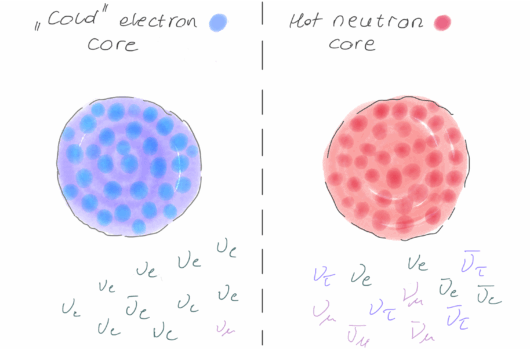A framework for phase transitions between the Maxwell and Gibbs constructions
A framework for phase transitions between the Maxwell and Gibbs constructions
View
Abstract
By taking the nucleon-to-quark phase transition within a neutron star as an example, we present a thermodynamically-consistent method to calculate the equation of state of ambient matter so that transitions that are intermediate to those of the familiar Maxwell and Gibbs constructions can be described. This method does not address the poorly known surface tension between the two phases microscopically (as, for example, in the calculation of the core pasta phases via the Wigner-Seitz approximation) but instead combines the local and global charge neutrality conditions characteristic of the Maxwell and Gibbs constructions, respectively. Overall charge neutrality is achieved by dividing the leptons to those that obey local charge neutrality (Maxwell) and those that maintain global charge neutrality (Gibbs). The equation of state is obtained by using equilibrium constraints derived from minimizing the total energy density results of which are then used to calculate neutron star mass-radius curves, tidal deformabilities, equilibrium and adiabatic sound speeds and non-radial g-mode oscillation frequencies for several intermediate constructions. Various quantities of interest transform smoothly from their Gibbs structures to those of Maxwell as the local-to-total electron ratio g, introduced to mimic the hadron-to-quark interface tension from 0 (Gibbs) to infinity (Maxwell), is raised from 0 to1, A notable exception is the g-mode frequency for the specific case of g=1 for which a gap appears between the quark and hadronic branches.






